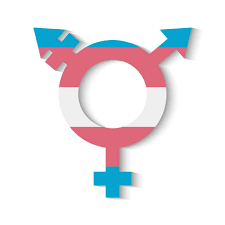Gender identity is a topic that has gained significant attention in recent years, with discussions around it becoming more prevalent in society, media, and education. Understanding what gender identity means is crucial as it impacts countless individuals and their experiences in the world. This article aims to demystify gender identity, exploring its intricacies, the distinctions between gender and sex, and the various challenges individuals face as they navigate their identities.
Understanding Gender Identity: A Quick Overview
At its core, gender identity refers to a person’s internal sense of their own gender, which may be male, female, a blend of both, or neither. This concept goes beyond traditional notions of gender roles and stereotypes, highlighting how personal identity can be distinct from societal expectations. For many, understanding and embracing their gender identity is a crucial part of their overall sense of self and well-being. Clitoris Growth On TestosteroneWhat Does Trans Mean
Gender identity is deeply personal and can differ significantly from person to person. Some individuals align closely with the gender assigned to them at birth, while others may identify as transgender, non-binary, or genderqueer. This rich diversity is what makes the exploration of gender identity both fascinating and essential in our increasingly inclusive society.
The Difference Between Gender and Sex Explained Simply
To grasp the concept of gender identity, it’s important to distinguish between gender and sex. Sex typically refers to the biological attributes that define humans as male or female, including anatomy and genetic differences. It’s what’s listed on your birth certificate and often dictates societal expectations from the moment of birth.
On the other hand, gender is much more fluid and entrenched in social and cultural contexts. While sex is often seen as a binary categorization, gender encompasses a broad range of identities and expressions that can vary across different cultures and communities. In essence, while sex is about biological differences, gender is about individual experience and identity.
Exploring the Spectrum: More Than Just Male or Female
Gender identity exists on a spectrum, which means it isn’t limited to just male or female. Many people identify as non-binary, meaning they don’t fully align with traditional classifications of either gender. Others might identify as gender fluid, feeling more aligned with one gender at times and another at different moments. This spectrum encourages a more inclusive understanding of gender, recognizing that human experiences and identities are complex.
This shift in perception is empowering for many who have felt constrained by societal norms. When we embrace the spectrum, we allow individuals to express themselves authentically, free from the pressure to conform to binary expectations. This not only benefits those exploring their identities but also enriches society by celebrating the diverse tapestry of human experience.
How Gender Identity Develops Over Time
Gender identity is not static; it can evolve as individuals grow and learn more about themselves. Many children begin to express their gender identity at a young age, often showing preferences for certain activities, clothing, or social roles. However, external influences from family, peers, and society can impact how these identities are expressed or repressed.
As people enter adolescence and adulthood, they may undergo further exploration of their gender identity. This period can involve questioning existing norms, experimenting with different expressions, and ultimately finding a sense of belonging. The journey of self-discovery can be empowering, but it can also come with its own set of challenges, particularly in a world where misconceptions and stereotypes still exist.
Common Terms: Learning the Language of Gender Identity
To engage in meaningful conversations about gender identity, familiarizing oneself with the terminology is essential. Terms like cisgender (identifying with the gender assigned at birth), transgender (identifying with a different gender), and non-binary (not strictly identifying as male or female) are just a few examples of the language used in this space. Understanding these terms can help foster respectful dialogue and support individuals in their journeys.
Moreover, language surrounding gender identity is continually evolving. New terms emerge as our understanding deepens, and individuals find new ways to articulate their experiences. Staying informed and open-minded is key to fostering an inclusive environment where everyone feels valued and understood.
The Role of Society in Shaping Gender Identity
Society plays a significant role in shaping our understanding of gender identity. From a young age, individuals are often exposed to cultural norms and expectations regarding gender roles, which can influence how they perceive themselves and others. These societal constructs can sometimes create barriers for those who do not fit neatly into established categories.
However, societal attitudes are gradually shifting towards greater acceptance and understanding of diverse gender identities. Increased visibility, advocacy, and education have prompted many to reconsider outdated beliefs and embrace inclusivity. As society continues to evolve, it becomes essential to challenge stereotypes and support environments that allow for the authentic expression of all gender identities.
Challenges Faced by Those Exploring Their Gender Identity
While the conversation around gender identity has expanded, many individuals still face significant challenges during their exploration. Discrimination, prejudice, and lack of understanding can create unsafe environments, leading to emotional distress and isolation. This can be even more pronounced for young people, who may struggle to find support within their families or communities.
Additionally, navigating healthcare systems can be daunting for those seeking gender-affirming care. Issues such as access to supportive services and the need for accurate information can sometimes hinder individuals from receiving the care they need. It’s vital for society to work towards breaking down these barriers, ensuring that everyone has the opportunity to explore and affirm their gender identity safely and healthily.
Embracing Diversity: Celebrating All Gender Identities
The journey toward understanding gender identity ultimately leads to a greater appreciation for the diversity within our communities. Celebrating all gender identities fosters inclusivity, allowing everyone to express themselves authentically. By amplifying the voices of marginalized groups and recognizing their experiences, we can create a world that values and uplifts every individual, regardless of their gender identity.
Embracing this diversity is not just a matter of personal respect; it enriches our societies as a whole. When people feel seen, heard, and accepted for who they are, they can contribute their unique perspectives and talents, fostering innovation, empathy, and progress. As we continue to navigate this complex landscape, let’s commit to supporting one another and celebrating the beautiful spectrum of gender identities.
Understanding gender identity is a vital step towards creating a more inclusive and compassionate society. By educating ourselves and others, acknowledging the spectrum of identities, and advocating for acceptance, we can help foster an environment where everyone feels safe to explore and express their true selves. Let’s keep the conversation going and continue to celebrate the diversity that makes our world vibrant and extraordinary.


